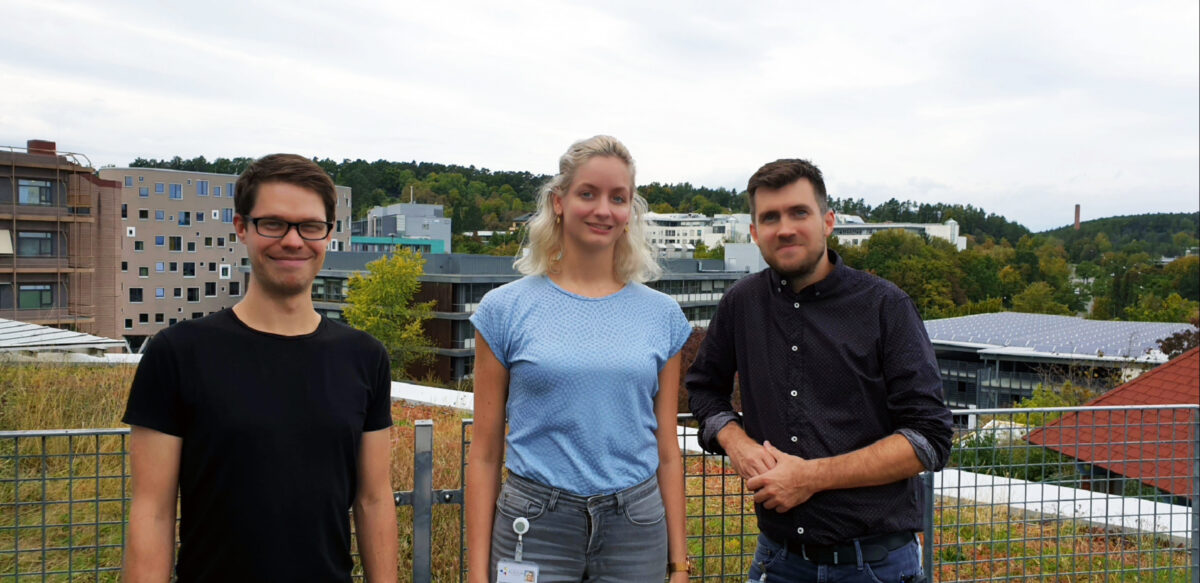Shanice Beerepoot, a PhD candidate at the Amsterdam Leukodystrophy Center, Amsterdam University Medical Centre (ERN-RND member), spent 6 weeks at the Paediatric Neurology department, University Hospital Tübingen, Germany to conduct research with Samuel Gröschel and Alexander Grimm. They investigated how the disease Metachromatic Leukodystrophy (MLD) affects the peripheral nerves in patients over time by analyzing the results of nerve conduction studies and nerve ultrasounds. Her stay was supported by the EJP RD fellowship program.
Thanks to this program I had the opportunity to combine the data of German and Dutch MLD patients, resulting in a total of 285 nerve conduction studies (from 97 patients) and 58 nerve ultrasounds (from 36 patients) to be analyzed. So far, the largest study examining peripheral neuropathy in MLD patients included one nerve conduction measurement in 40 patients with early disease onset (http://dx.doi.org/10.1136/jnnp.2005.063776). In addition, nerve ultrasound findings have been reported for only one MLD patient (https://doi.org/10.1016/j.jns.2016.07.030). Since clinical observations indicate that the severity and time course of peripheral neuropathy differ among MLD patients, especially among those with later disease onset, and the impact of current treatments in these patients remains unclear, we aimed to study nerve conduction and ultrasound findings in a larger and more diverse patient cohort with multiple measurements over time.
The initial findings indicate that almost all MLD patients are affected by peripheral neuropathy. This is supported by both conduction and morphological abnormalities of the peripheral nerves. The neuropathy is mainly caused by loss of myelin sheaths that are normally wrapped around nerve fibres (axons) to increase speed of nerve conduction. In addition, loss of the axons plays a role while partial or complete nerve conduction blocks are extremely rare. The sensory nerves, especially the sural nerve followed by the median nerve, seem to be affected earlier and more severely than the motor nerves. The nerve conduction and ultrasound abnormalities indicate that peripheral neuropathy in late infantile and early juvenile MLD patients (patients with early disease onset 1) is generally severe, while in late juvenile and adult MLD patients (patients with late disease onset 2) wide variation exists. Taking the age at the moment of measuring into account, analyses show that the nerve conduction in patients with late disease onset can range from being as severely impaired as in patients with an early disease onset to being similar to healthy individuals. Interestingly, the nerve conduction velocity seems to remain quite stable over time without obvious influences of patient and treatment characteristics. On group level, patients with motor symptoms have significantly slower nerve conduction compared to MLD patients with only cognitive symptoms. However, even patients with only cognitive symptoms and patients without symptoms can already have severely impaired nerve conduction velocity. Remarkably, patients with absent or only mild peripheral neuropathy over time shared a few exclusive genetic variants in the MLD gene ARSA.
Although these initial results already provide more insight in the course of peripheral neuropathy in MLD patients, much work still needs to be done. In particular, the short-term effect of treatment on worsening of the peripheral neuropathy is fascinating. I am currently analyzing the data from my home office in The Netherlands which would not have been possible without the knowledge and the data that I gained at the University Hospital Tübingen. Experienced paediatric and adult neurologists from this institute taught me how to interpret the data derived from nerve conduction and ultrasound studies and how to best combine the results obtained in different institutes.
I especially want to thank Samuel Gröschel, Alexander Grimm, Pascal Martin and Ingeborg Krägeloh-Mann for this. In exchange, I was able to help structuring the data and to introduce some upcoming advanced statistical techniques to the researchers in the institute. Eventually, I stayed for a period of six instead of four weeks, because combining our international experience led to new ideas that required additional data collection. In addition, we shared thoughts and techniques on other topics in MLD research and started even a new collaborative project. Therefore, I want to express my gratitude to the European Joint Programme on Rare Diseases (EPJ-RD) and the European Reference Network for Rare Neurological Diseases (ERN-RND) for their support.
1 disease symptoms occurring before the age of 6 years
2 disease symptoms occurring at the age of 6 years or older

